This is my little princess, Camelia. She will always be my princess, and I fear that when she is married and has kids of her own, her hubby may not appreciate his mother-in-law calling his beautiful wife “Princess”. But we will cross that bridge if we ever come to it – because according to my Princess, she will never get married. She will become a chef, live at home with me and make me good food… I’m quite certain that’s her sweet way of wink-nudging me that she wants me to cook awesome food like grandma 😛
Here is a pic of my Princess and her beautiful smile!

Camelia (Cami for short) LOVES all-things-Literacy! When she was younger, she liked to sit next to her older brothers and listen to them read. During her preschool year, she drew all sorts of amazing pictures and used invented spelling to label her drawings and later write sentences. Here is a great article on Invented Spelling from Reading Rockets if it’s an idea that you’d like to check out! I’m sure this was something she picked up from the boys as I did not have much time to develop this interest in her { insert great, heavy sigh and sob here}.
Anyhow, let’s look at what Cami has been doing for homework these past 2 terms! The school she attends uses a Phonics curriculum called LEM Phonics and students are taught “phonograms”, which, and it took me a while to fully comprehend, is really another way of saying “all the sounds a single letter makes.” An example would be for the letter A: most preppies are taught that the letter A makes the short and long a sound. LEM Phonics teaches the 5 main letter A sounds (I know, I was like what?!? 5?!?!) and then children are taught to blend letter sounds together and read basic words as soon as they have learnt a, d, c, and s. On most days, Cami came home with one of these reading sheets. Pictures below, she has identified words that contain the short i sound (orange) and long i sounds (pink) and is tracing the letter i with her finger.
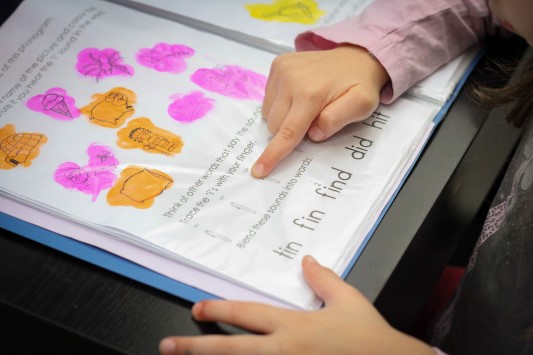
Here she is reading the words at the bottom of her homework reading sheet. For beginning readers, the LEM Phonics curriculum places a number above a letter that produces multiple sounds to make it easy for children to identify which sound “the letter is saying”. So, in the example below, a number 2 has been placed above the letter “i” to show that i will say it’s second sound, which is the long i sound.
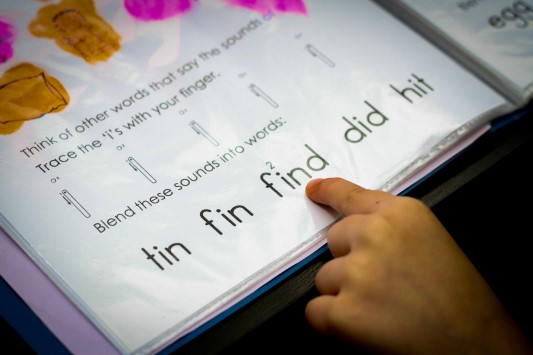
Once in a while, I ask Cami to do some handwriting sheets. Here she is practicing the letter P from my Handwriting SOS unit. This unit is ideal for children who struggle will letter size differentiation as the highlighted bottom half shows a concrete separation of the handwriting line, making it easier to understand and practice correct letter placement on the handwriting line. Here is a great article from Make, Take & Teach that inspired me to make this set for my older son whose handwriting has improved greatly since I introduced these to him.
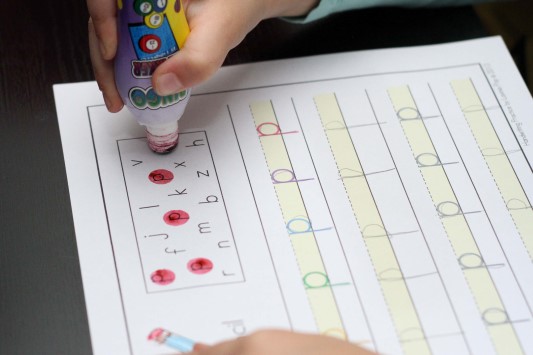
Cami loves word work activities, so they have been very popular in our home. Here are some of the things we have done together:
Magnetic letter spelling: I call out a word from the bottom of her homework reading page and she spells it for me on the back of her desk, which is magnetic. LOVE this desk!
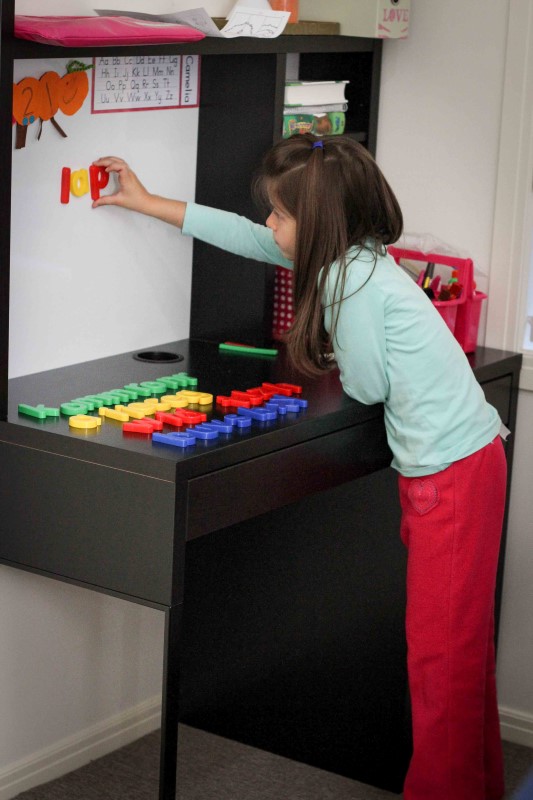
My princess loves puzzles, and these CVC word scrambles were a favourite! The unit pictured below is from my Phonics Letter of the Week unit {download the FREE letter B here}.
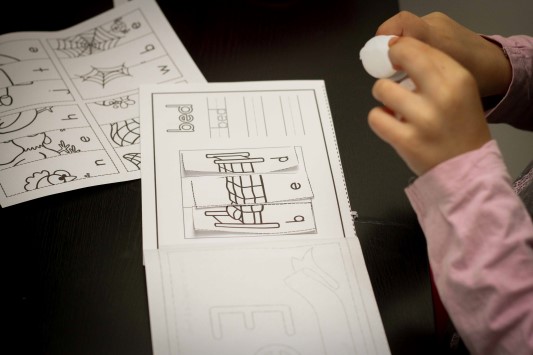
To practice letter formation, I call out random CVC words and Cami writes them in a salt try box. The one pictured below is actually decor sand that you fill vases with and it worked just as well as the salt tray.
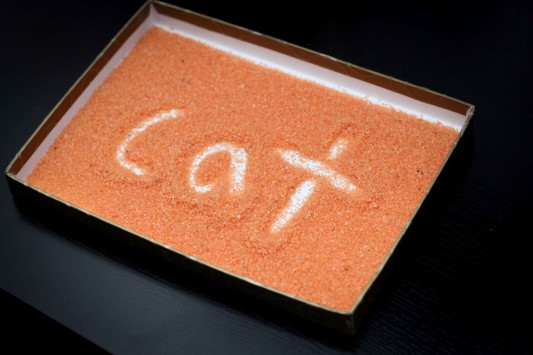
We also used Scrabble letters…
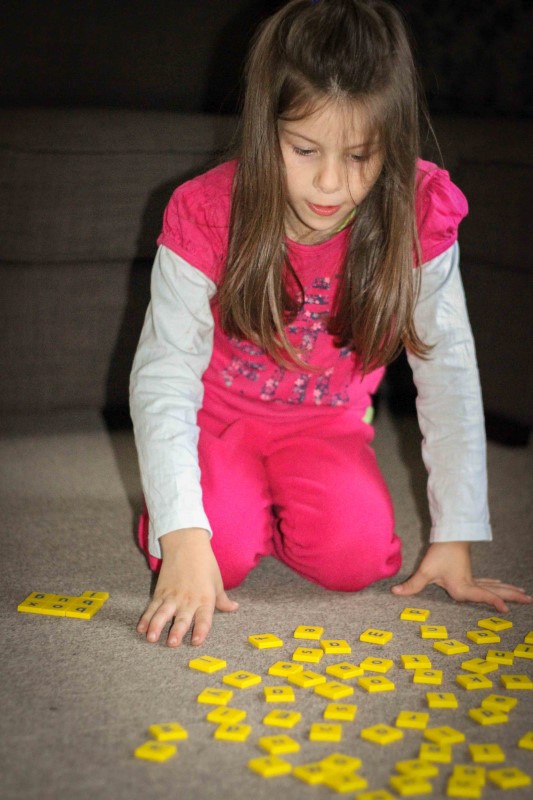
A lot. Here she is building words all on her own… sometimes she wants to do her own word-building and doesn’t need me to tell her which words to build! Perfectly fine with me, pumpkin 🙂
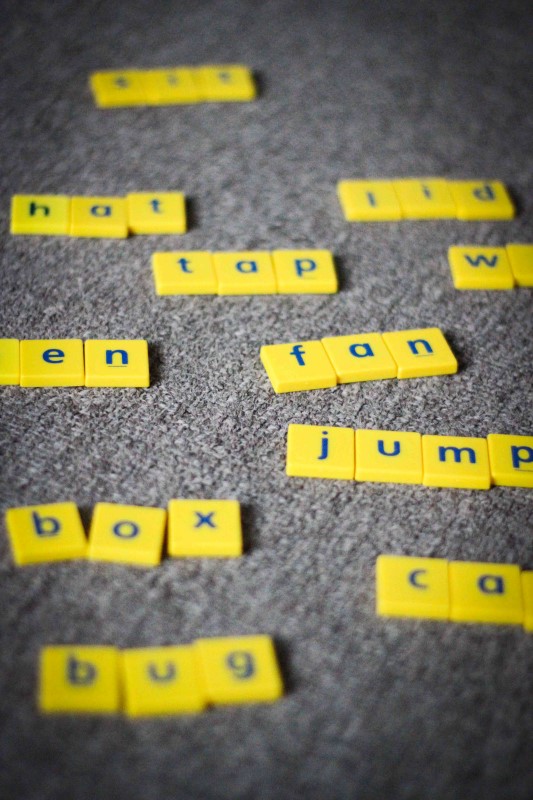
Another HUGE favourite of Cami’s is this Word Families Mystery Word activity {download the FREE unit here!}. The objective is to build the words on the board using the letter tiles provided.
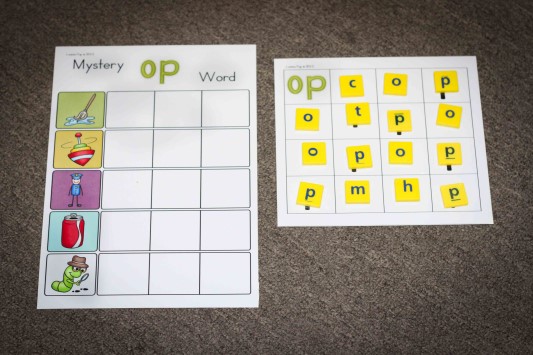
Once the first 4 words have been built, you have to figure out what the mystery word is! In the case ow word families, it’s not difficult to do, but, oh-my-word! She is thrilled to bits when she builds that word independently and can say to me, “I know what the mystery word is!” And that’s what you want for any beginning reader: a great sense of achievement that will give them the confidence to tackle the next reading step!
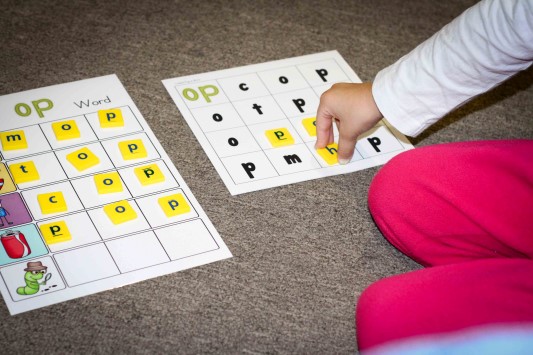
Cami also likes to read and I use 2 main reader sets with her. The first is from the Early Emergent Reader Level 1 set {available in my TpT store here}. These books contains decodable words and some sight words, so she can not read the readers independently and needs me to help her when she comes across a sight word. Having said that, she has now learned the most frequent sight words and does not call on me as often as before!
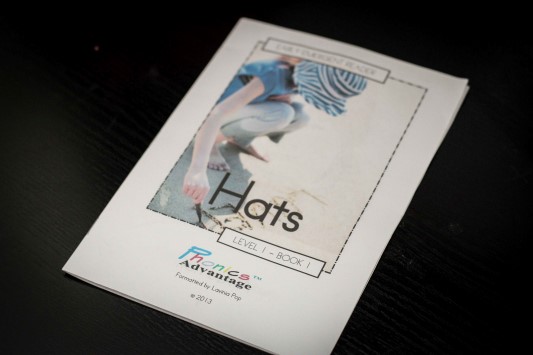
We also use Reading A-Zs Decodable Books set , which she can read independently.
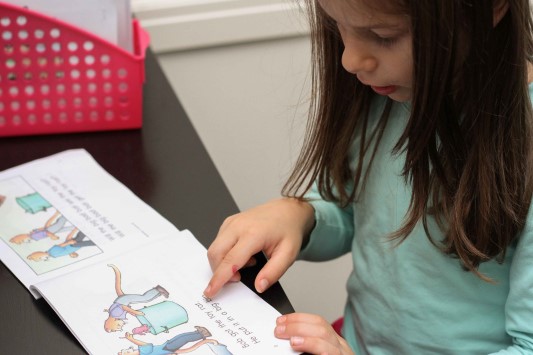
And when she’s keen, she completes the reader’s accompanying worksheet! Here is Filip watching Cami as she works, a common trend in our home 🙂
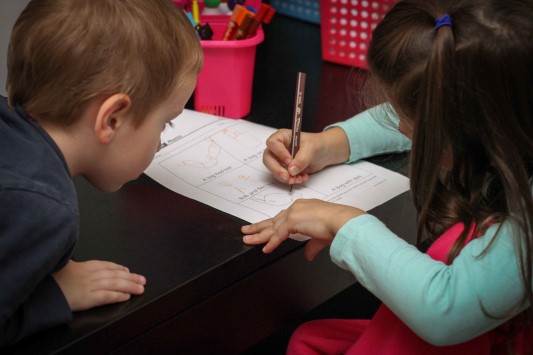
Last week, Cami started learning “multiple phonograms” (which are digraphs, diphthongs and other vowel patterns). So far, she’s learnt “er,”, “ir”, “ur” “ear”, “wor”, “th”, “sh” and “ee”. She is also getting readers from school now and she is SO proud when she pulls one out and reads it for me. I will blog more about the “multiple phonograms” and how that’s going later next term, though!

Your daughter is beautiful! And I’m amazed at the reading system her school uses and how much she knows already. Our students don’t even get exposed to long vowels until 1st grade. The Reading A-Z system – did you get a subscription on your own, or does the school share the password with school families? It just seems a little pricy for individuals to get.
I have a personal subscription to Reading A-Z. It is a little pricey, but I use them on a daily basis with all 3 older children often and they love having their own booklets!
Your daughter is beautiful :):) I love all your activities!
Thank you 🙂
Camelia is adorable! That program she is using seems interesting. How do you feel about that strategy for learning? I love how the siblings feed off of one another. Encouragement at its best! Cool activities too!
Thank you, Shannon! The program is indeed very interesting and I personally love it! 🙂 It’s very in depth and thorough, but the children are taught everything they need to know at school and so when they come home, they can complete most of their homework independently.
Oh my gosh, your princess is a smartie! I have not heard of LEM Phonics but it looks like a rigorous phonics program! My 5-year-old is entering kindergarten this fall and the school uses two phonics programs (Jolly Phonics & Read Write Inc Phonics) BUT they don’t learn digraphs/dipthongs/vowel patterns till first grade. This is why I’ve been afterschooling him and been purchasing your phonics units! 🙂 I also have one princess at home – your daughter reminds me of her because she too, loves word work and reading! Hoping to see more posts of your learning journey with Cami!
I’m pleased to know that my phonics units have been helpful or will be helpful 🙂 The phonics program is quite rigorous, but the teachers really take them time to explain everything to the kids and ensure they fully understand before moving on. My daughter’s teacher – who taught my 2 older boys too – is amazing! She’s just one of those teachers that instills a passion for learning in kids! We are so very blessed to have had her teach our munchkins!!
HI Lavinia
That reading sheet with the numbers over the words look really great. I am very interested in sourcing them. Would you please be able to help me with that? Thank you:-)
Ora,
That is page that my daughter received from school for homework, which means I can’t share it online.
I have something similar in my store that may interest you: https://www.teacherspayteachers.com/Product/Phonics-Alphabet-Reading-Homework-1336348
Pingback: Melanie Glastrong